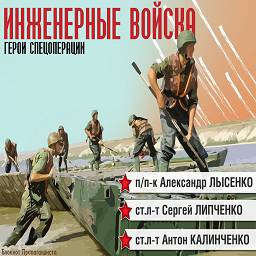Путь:
Quick Links
Language [ ENGLISH РУССКИЙ ]
Search
Подписка и соц. сети
New Materials
- Buy instagram followers 2020-09-09
- FISCAL FEDERALISM THE CANADIAN EXPERIENCE 2020-03-22
- Analysis of differentiation of socio-economic development of the Russian regions 2020-03-22
- Economic development in the Russian regions institutional and macroeconomic problems 2020-03-22
- Russias North Economic Problems of Development 2020-03-22
- Problems of Fiscal Federalism in Russia 2020-03-22
- REGIONAL ASPECTS OF THE FEDERAL ECONOMIC POLICY 2020-03-22
- THE TELEVISIONS PROJECT 2020-03-22
- Journeys into History Through the Future 2020-03-22
- Artists Bring the Computer to Life 2020-03-22
- Culture in the Upcoming Millenium 2020-03-22
- What is a work of telecommunicative art 2020-03-22
- Tatiana Didenko Executive Producer 2020-03-22
- ABC Amber Conversion and Merging Software 2019-12-08
- Human-Rights Journal Finds Survival Hard in New Russia 2018-03-12
Картинка недели
Union maniac
Evaluation section:
0
Union Punk is a wide circle of like-minded people who respect the era of the Soviet Union.
In many cities and countries of the former USSR there were fans who willingly share their memories with the same fans.
Proud of old times, constantly compare reality with the past.


Категории
The last BI fighters
Date of publication: 2017-10-13 22:53:27Дата модификации: 2017-10-13 22:53:27
Views: 1104
Author: admin
The BI fighting machine was developed at the design bureau named after V.Bolkhvitinov by A.Bereznyakov and A.Isaev in 1941. Powered by a single liquid-fuel D-1A-1100 engine, the aircraft is recognised as the first Russian jet fighter. On 15 May 1942 the test pilot G.Bakhchivandji flew the second prototype designated BI-2 to test the powerplant in the air for the first time. After the BI-3 crashed on 27 March 1943 killing the pilot, a series of the BI fighters was left unfinished, but a few prototypes continued test flights.
The sixth prototype was specially modified to investigate the problem of jet flight duration, which in the case of the BI fighters equated to only two minutes. This particular plane received two ram-jet engines fitted into its wing tips. In spring 1944 the aircraft underwent full-scale testing in the T-101 wind tunnel belonging to TsAGI, the Central Aerohydrodynamics Institute, but was never flown.
During flight tests conducted in 1944, the BI-7 distinguished from the other BI family aircraft by the geometry of its wing fillets and the existence of fairings on the arc starter, showed vibration and buffet of the empennage. To look into the effect, the BI-5 and BI-6 were modified in the manner of the BI-7. During March-April 1945 they underwent engine-out (glide) testing with a North American B-25J twin bomber used as a tug. The BI-5 featured a ski-type undercarriage, while the BI-6 had wheeled landing gear. Vibration did not occur.
As far as we know, the flights mentioned above were the last ones for the BI fighters because shortly the program was abandoned.
Article 302
Before WW2, RNII, the Scientific Research Institute of Rocketry, began RD work on the Article 302 jet interceptor. Because the project is well-described in two books called History of Aircraft Designs In the USSR. 1938-1950 by V.Shavrov (in Russian, issued in 1988 by Mashinostroenie publishing house) and Development of Aircraft in the USSR (in Russian, issued in 1994 by the Central Aerohydrodynamics Institute), there is no need to tell the story once again. What I like to do is to remind readers that the interceptor was conceived as having a composite powerplant consisting of two ram-jet engines with square-shaped variable nozzles under the wing and one liquid rocket engine in the rear fuselage. Because the ram-jet engines were unfinished, the Article 302 was fitted with a single RD-2M two-chamber liquid rocket engine only.
In spring 1943 the Article 302 entered flight testing at LII, the Flight Research Institute. The interceptor came armed with four 20-mm ShVAK cannons (two in the forward fuselage and the other two under the cockpit).
Because of intensive delays in the ram-jet engine program, the aircraft was turned into glider and re-designated Article 302P (P stands for Glider). After removing the gunnery and some equipment items, the glider was fitted with a full-scale mock-up of the single-chamber liquid rocket engine, which was placed near the fairing.
The flight tests discovered unsatisfactory stability and the plane was sent to TsAGI, the Central Hydroaerodynamics Institute, to be wind-tested. After a few improvements were made, the glider flew again, now showing perfect stability and handling. There were no engine flights due to the powerplant development problems.
Long-range I-16 fighter
Amongst countless development and mass-production versions of the Polikarpov I-16 fighter there was its long-range variant called Article 20 or I-16 type 20, which is usually unheard of. But this plane is remarkable, for the development and use of new drop fuel tanks each carrying 67.5 kg of petrol. The tanks extended the range by as much as 75% so that the fighter could be used to escort the SB bombers built in large numbers.
Structurally, the I-16 type 20 was a derivative of series-production I-16 type 10 fighter. The aircraft appeared and underwent tests in 1939. Although the I-16 type 20 was never in mass- production, the fuel tanks tested on it proved useful on the I-16 type 24 and type 29 fighters, popular in the early 1940s.
Publishing House Aviation Cosmonautics
Evaluation of the document:
0
Article description: The BI fighting machine was developed at the design bureau named after V.Bolkhvitinov by A.Bereznyakov and A.Isaev in 1941. Powered by a single liquid-fuel D-1A-1100 engine, the aircraft is recognised as the first Russian jet fighter.
Nested sections



_косплей_совьет_панк.jpg)

_стенгазета_союз-маньяка.jpg)
_юмор_в_стиле_союз-маньяк.jpg)


